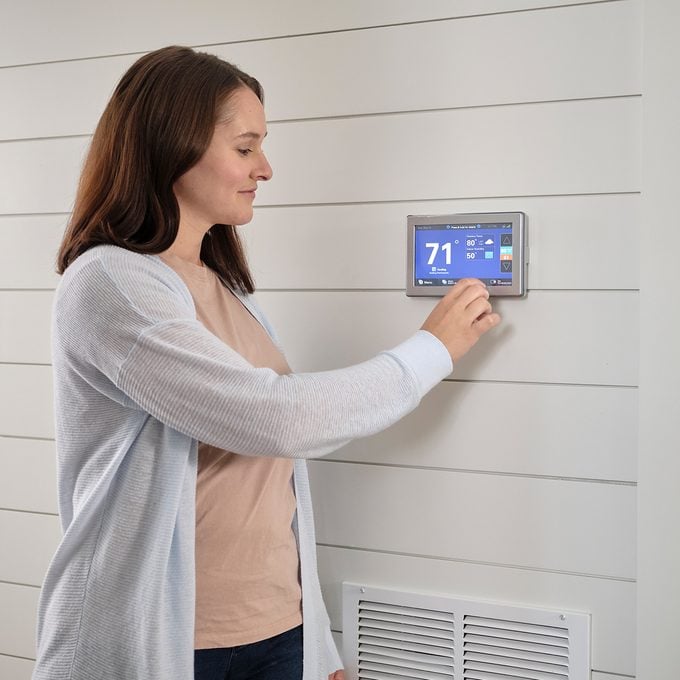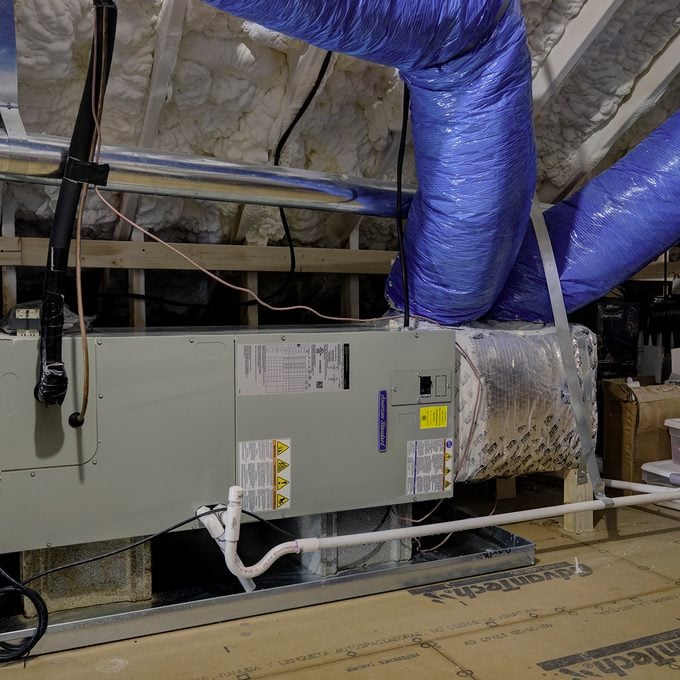When your HVAC system isn’t functioning properly, it’s tempting to panic. Resist the urge. Whether it’s just not operating as it should or it’s not working at all, take these steps to try to identify the problem. The issue might be a simple fix. If it isn’t and you need to bring in a professional, your sleuthing hasn’t been wasted. It may help the service pro identify the problem and repair it quicker, potentially reducing your cost and returning you to comfort faster.

1. Inspect the thermostat. If your HVAC system isn’t working at all or working erratically, make sure the thermostat is at the proper setting for heating or cooling and programmed correctly to turn on and off at the appropriate times. If it has batteries or is rechargeable, replace the batteries or check the charge level.
2. Check the electrical panel. If your HVAC system isn’t working at all, make sure the power switch at the unit is on, and check the breaker at the electrical panel. If it’s in the on position, flip it off and then on again. If it’s in the off position, flip it on.
3. Look at the vents. If airflow is obstructed, you’ll have cold or hot spots in your house. Make sure each vent is fully open. Clean them regularly with a broom or a cloth so they aren’t clogged with dirt or debris. Move furniture or other objects that might be blocking them and preventing air from circulating in a room.
4. Clean or replace filters. Your HVAC air filter keeps dust and other impurities from entering your home. Maintaining it helps keep indoor air cleaner, lets your system run more efficiently, lengthens the system’s life and reduces the chances of costly repairs. Use filters recommended by the manufacturer, and set a reminder to change or clean your filter every 30 to 90 days. If you have pets or a lot of dust in your home, clean or change the filter on the shorter end—every 30 days or so. Periodically replace washable filters.

5. Inspect ductwork. Leaks in air ducts affect how much conditioned air gets to where it needs to go. It’s common for leaks to occur at duct joints. You can detect those with your hand when the system is running. Seal air leaks with aluminum foil tape.
6. Clear the area around the unit. Check the area surrounding your HVAC unit. For proper airflow, outdoor units should have several feet around them clear of plants and debris. Indoors, clear away any boxes or clutter near a unit that could obstruct airflow and access.
7. Look for air leaks and drafts. If your doors and windows aren’t properly sealed, or if you don’t have adequate insulation, you’ll have cold or hot spots in your home. This means your HVAC system will have to work harder. Check the attic to see if you should increase insulation. Remove trim around doors and windows, and seal any gaps with foam insulation; when you reinstall the trim, caulk around it. Check exterior doors for adequate weatherstripping, and make sure thresholds seal properly.
8. Check the AC’s coils and fan blades. Debris and dirt on the condenser coils and blades can prevent the unit from operating properly. To clean them, first shut off power to the condenser at the nearby electrical box and confirm that it’s off. Then, using a hose and nozzle, spray water at the coils and blades. Prevent future problems by doing this task every spring, just before the cooling season begins.
